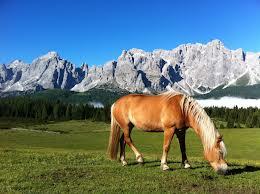Italy's famous Dolomites mountains on Friday became a World Heritage Site, joining natural wonders such as the Galapagos Islands and manmade ones like Angkor Wat temple in Cambodia and Versailles palace in France.
Announcing its decision in Seville, a United Nations heritage panel praised the Alpine range as ''one of the most beautiful mountain landscapes anywhere.''
The World Heritage Committee panel voted unanimously for the stunning mountain range.
''A dream that has been long nurtured has come true,'' said famed mountaineer Reinhold Messner, a Dolomite native, voicing the hope that the recognition would help boost sustainable tourism.
Italian Environment Minister Stefania Prestigiacomo, who was in Seville, hailed the decision as ''a great victory for Italy'' and said Italy might now launch a bid for the rest of its Alps to earn a UNESCO laurel.
When he helped launched the Dolomite bid in 2004, Messner said: ''The Dolomites are completely unique - they cannot be compared to any other mountain in the world''.
''Their beauty derives from the contrast between the green of the meadows and the vertical rock faces and the composition of the rock itself, which changes colour throughout the day.
''It also comes from the fact that each mountain in the range has its own unique, recognizable face and its own peculiar characteristics,'' said Messner, considered the world's greatest mountaineer, who has been climbing in the Dolomites for six decades.
The Dolomites - named after the dolomite rock that gives them their special colour and shape - were formed around 90 million years ago, when the landmasses that are now Europe and Africa came together and pushed the Alps up out of the sea.
The reefs and coral that once surrounded lagoons, home to thousands of marine organisms, helped create the Dolomites' striking appearance and its unusual geological characteristics.
The unique formations were further shaped by glaciers that covered the earth during various ice ages and then melted as the world grew warmer again, carving out valleys and peaks.
The northern Italian range is today a haven for active holidaymakers, drawing climbers, hikers and skiers from around the world.
Italy now has 44 UNESCO sites including the historic centres of Rome, Venice, Florence, Siena, Verona, Ferrara, Ravenna, Assisi, Urbino and San Gimignano; the Roman city of Pompeii; the Leaning Tower of Pisa; the Amalfi coast; the Cinque Terre region near Genoa; Puglia's 'trulli' buildings; Hadrian's Villa at Tivoli; the Greek temples at Agrigento; the Etruscan tombs at Cerveteri north of Rome; and the Milan church that houses Leonardo da Vinci's Last Supper.
The Dolomites' victory means Italy consolidated its position at the top of the UNESCO rankings.
Spain is second with 40 sites, followed by France and Germany with 33, the United Kingdom with 27, Russia with 23 and Greece with 17.
UNESCO has since the 1970s listed places of ''outstanding universal value'', deeming them so precious as to belong to humanity in general, not just the country where they are located.
